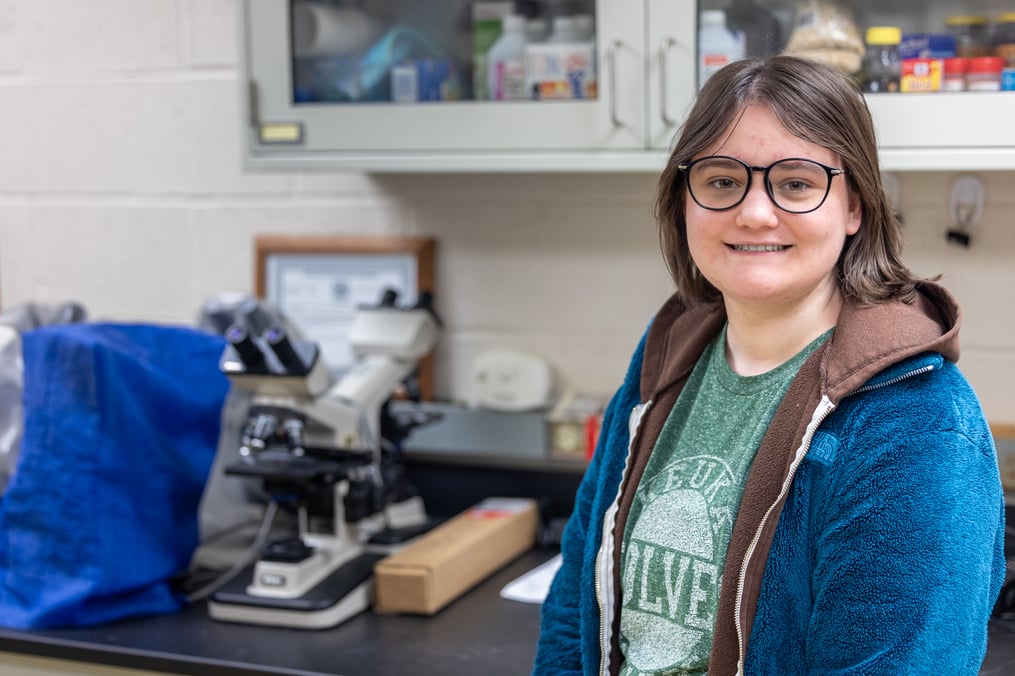Lily McLaughlin ’25 began her self-directed Field Period® by compiling a list of invasive species that have taken hold in the Keuka Lake Watershed. She was stunned when the list topped 100.
“I knew there were a lot,” said Lily, a fourth-year biology major at Keuka College, “but I didn’t know there were that many.”
From that lengthy inventory, Lily chose 10 especially destructive plants and animals – an ecological “Most Wanted” – to feature in a series of hand-illustrated posters. The goal, she said, is to help local residents identify these intruders and learn how to stop their spread.
“I hope that people who see my work will understand that invasive species can become a huge problem if they’re not managed properly,” she said.
Dr. Dominique Derminio, assistant professor of biology at Keuka College, noted that invasive species pose a particular threat to freshwater ecosystems like the Keuka Lake Watershed, which spans 174 square miles in Yates and Steuben counties.
“Invasive species can alter water quality and food web dynamics,” said Dr. Derminio, “and species like zebra mussels contribute to ecological shifts that may exacerbate harmful algal blooms.”
Another culprit in Lily’s lineup: purple loosestrife. It may look pretty, but once it spreads to local wetlands, it quickly replaces diverse native vegetation and disrupts the nutrient cycle. To remove them, the poster advises, dig them up by the roots before they go to seed.
ROOTED IN CURIOSITY
Originally from Irondequoit, N.Y., Lily said she was drawn to Keuka College for its small campus and beautiful lakeside location.
“I always had an interest in the natural sciences, especially animals,” she said. “So, I knew I wanted to major in biology.”
During a previous Field Period, Lily had the chance to work with spotted lanternflies, which arrived in New York state in 2020 and have since wreaked havoc on local vineyards. Her interest in invasive species was heightened by a course in limnology – the study of lakes.
Dr. Derminio said this topic speaks directly to the natural sciences curricula at Keuka College, as well as several promising career paths.

“By examining the invasive species in our region, students can gain hand-on experience in field research, data analysis, and environmental problem-solving. This prepares them for jobs in conservation, research, and policy.”
Lily’s Field Period project has illuminated a world of possibilities.
“I hope this experience will guide me to start pursuing scientific illustration, or to continue to work with invasive species,” she said.
THERE’S MORE TO DISCOVER
It’s a big world. As a biology student, you’ll find out what makes it tick at every level, from molecules to populations. Learn more about Keuka College’s Biology program.













